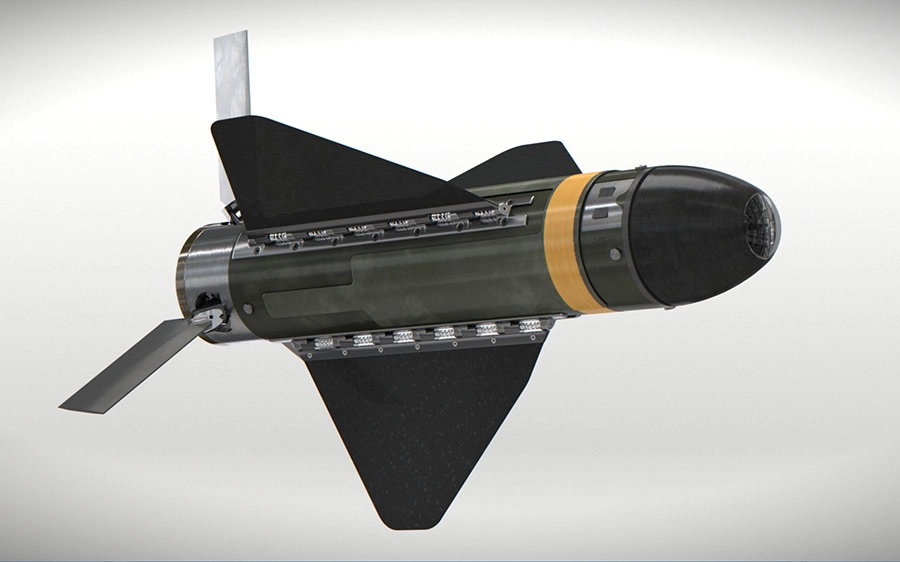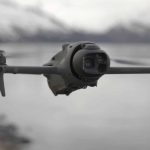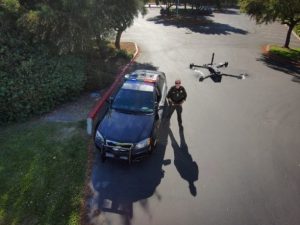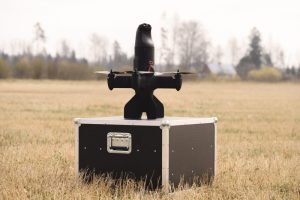NORTHROP GRUMMAN LUMBERJACK DRONE AIMS TO REDUCE LONG-RANGE MUNITION EXPENSES
On April 30, Northrop Grumman unveiled its newly developed medium-range, jet-powered one-way attack drone (OWA) named Lumberjack at a maritime defense expo held in Washington, D.C. As detailed by Sebastien Roblin, this drone operates within Group 3 UAS parameters, and its payload is comparable to the 250-lb-class GBU-39 Small Diameter Bomb. It boasts a range of “several hundred miles” or can loiter above a battlefield for approximately two hours.

This single-use drone started testing in 2024 alongside the Office of the Undersecretary of Defense for Research and Engineering. It has the ability to deploy multiple submunitions or carry electronic warfare payloads, all at a fraction of the cost of similarly capable missiles. The Lumberjack is capable of full autonomy but can also be operated with man-in-the-loop engagement via its two-way datalink.
Notably, the Lumberjack supports launch from a field-deployable pneumatic ground-launch system, often described as a “potato gun,” or from an electric rail mounted on ships. A compatible air-launch solution is also under development to support various government partners.
The drone’s design features a compact fuselage with two fold-out wings and smaller fins at the back, along with a fixed sensor positioned below its curved nose.
With a price range of $75,000 to $100,000 “per effect,” it is positioned to be significantly cheaper than many existing U.S. loitering munitions, which have previously been priced much higher compared to equivalent systems deployed in combat by nations like Ukraine, Iran, and Russia. For instance, the Shahed-136 Group 3 OWA drone is estimated to cost between $20,000 and $40,000, while its jet-powered version, the Shahed-238, could range from $80,000 to $100,000.
The Lumberjack seems particularly designed for deploying Northrop Grumman’s Hatchet mini-glide bombs, which have adjustable wings and can be integrated as payload for other drones. The Hatchet measures about a foot long and, according to company claims, four such munitions can be carried on a Group 3 drone.
COMPARING STRATEGIES: DRONES VS MISSILES
Current conflicts, such as the war in Ukraine and U.S. Navy operations in the Red Sea, have exposed the rapid depletion of guided munitions in high-intensity engagements. In light of this, the Pentagon has launched several initiatives aimed at providing low-cost, quickly produced munitions, thereby ensuring a robust and sustainable inventory for future conflicts.
Drone-like munitions offer advantages, including lower unit costs, faster production, and reduced logistical demands compared to traditional cruise or ballistic missiles. For instance, the Pentagon could acquire 35 Lumberjack drones at an estimated price of $100,000 each for the price of a single Precision Strike Missile, which has a range exceeding 300 miles.
However, there are inherent trade-offs to consider. Traditional OWA drones operate at slower speeds compared to subsonic cruise missiles, which offer certain tactical advantages, including extended warning times for engaging targets or the opportunity to evacuate personnel. Conversely, Lumberjack benefits from fuel-efficient loitering capabilities, potentially allowing for reconnaissance, electronic warfare, or on-demand target engagement.
From a naval perspective, the Lumberjack presents an interesting alternative as the Navy currently relies on expensive long-range land-attack systems, like the Tomahawk cruise missile, which costs over $2 million each. The Lumberjack could provide a cost-effective solution for striking smaller, dispersed targets without incurring significant overhead costs.
Northrop Grumman is also promoting the potential of land-based Lumberjack operations to conduct precise strikes from remote locations, requiring minimal logistical support. The future demand for such capabilities will determine the success of the Lumberjack amidst evolving military strategies and requirements in the realm of drone warfare.













